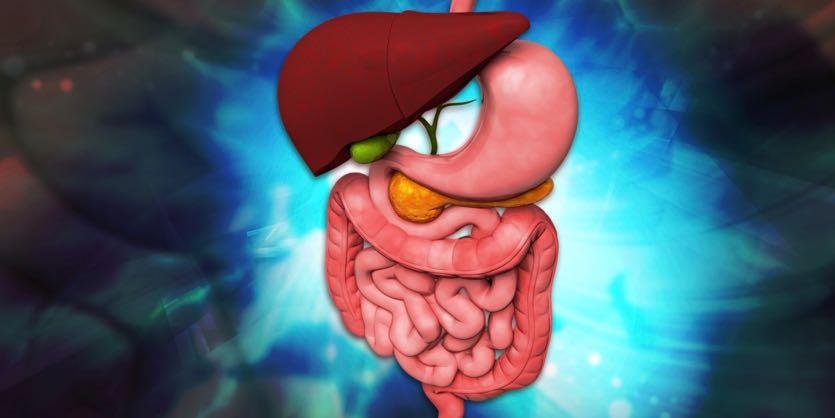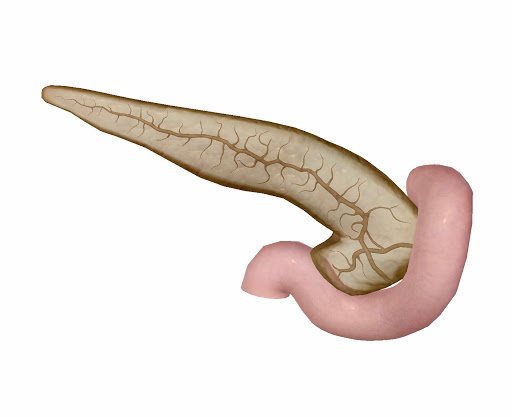

Two views of the proventriculus and gizzard from the digestive tract of a chicken (Image by Dr. At this point, however, the food has not yet been ground-this organ is called the proventriculus because its location in the digestive tract is before the ventriculus, where food is ground (see Figure 4). Hydrochloric acid and digestive enzymes, such as pepsin, are added to the feed here and begin to break it down more significantly than the enzymes secreted by the salivary glands. The proventriculus (also known as the true stomach) is the glandular stomach where digestion primarily begins. The esophagus continues past the crop, connecting the crop to the proventriculus. The swollen crop also can block the windpipe, causing the chicken to suffocate. With crop impaction, even if a chicken continues to eat, the feed cannot pass the impacted crop.
#Pancreatic digestive juices are carried by free#
Crop impaction also can occur when a chicken free ranges on a pasture of tough, fibrous vegetation or eats long pieces of string. This problem-called crop impaction, crop binding, or pendulous crop-can occur when a chicken goes a long time without feed and then eats too much too quickly when feed is available again. Occasionally, the crop becomes impacted, or backed up. These birds can consume relatively large amounts of food quickly and then move to a more secure location to digest that food. The crop evolved for birds that are typically hunted by other animals but need to move to the open to find feed. Jacquie Jacob, University of Kentucky)Īlthough the digestive enzymes secreted in the mouth began the digestion process, very little digestion takes place in the crop-it is simply a temporary storage pouch. Location of the crop in a female chicken (Image by Dr. When the crop is empty or nearly empty, it sends hunger signals to the brain so that the chicken will eat more.įigure 3. Swallowed feed and water are stored in the crop until they are passed to the rest of the digestive tract. The crop is an out-pocketing of the esophagus and is located just outside the body cavity in the neck region (see Figure 3). It carries food from the mouth to the crop and from the crop to the proventriculus. The esophagus is a flexible tube that connects the mouth with the rest of the digestive tract.

The chicken uses its tongue to push the feed to the back of the mouth to be swallowed. Also, the saliva contains enzymes, such as amylase, that start the digestion process. However, the mouth contains glands that secrete saliva, which wets the feed to make it easier to swallow.

Chickens do not have teeth, so they cannot chew their food. Food picked up by the beak enters the mouth. Location of the digestive tract in a female chicken (Image from and used with permission) Beak/MouthĪs with most birds, a chicken obtains feed by using its beak. Jacquie Jacob, University of Kentucky) Figure 2. Digestive tract of a female chicken (Image by Dr. Figure 1 shows a chicken digestive tract, and Figure 2 shows the location of the digestive tract in the chicken’s body. In chickens, the digestive tract (also referred to as the gastrointestinal tract or GI tract) begins at the mouth, includes several important organs, and ends at the cloaca. The chicken has a typical avian digestive system. After being released from food during digestion, nutrients are absorbed and distributed throughout the animal’s body. The chemical action includes the release of digestive enzymes and fluids from various parts of the digestive system. In many animals, the mechanical action involves chewing however, because birds do not have teeth, their bodies use other mechanical action. An animal’s body breaks down food through both mechanical and chemical means. The digestive system of any animal is important in converting the food the animal eats into the nutrients its body needs for growth, maintenance, and production (such as egg production). Jacquie Jacob, University of KentuckyĪn understanding of the avian digestive system is essential for developing an effective and economical feeding program for your poultry flock and for recognizing when something is wrong and taking necessary actions to correct the problem.


 0 kommentar(er)
0 kommentar(er)
